그래프 탐색에는 두 가지가 있다.
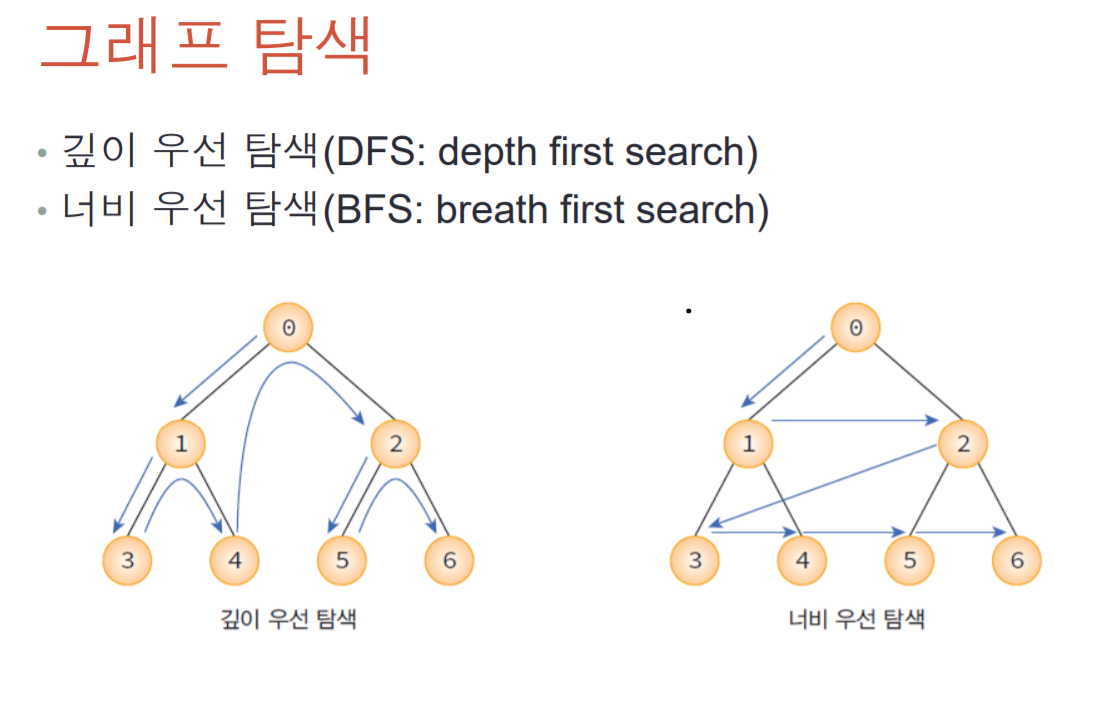
DFS(깊이 우선 탐색)
dfs에 대해서 먼저 알아보자.
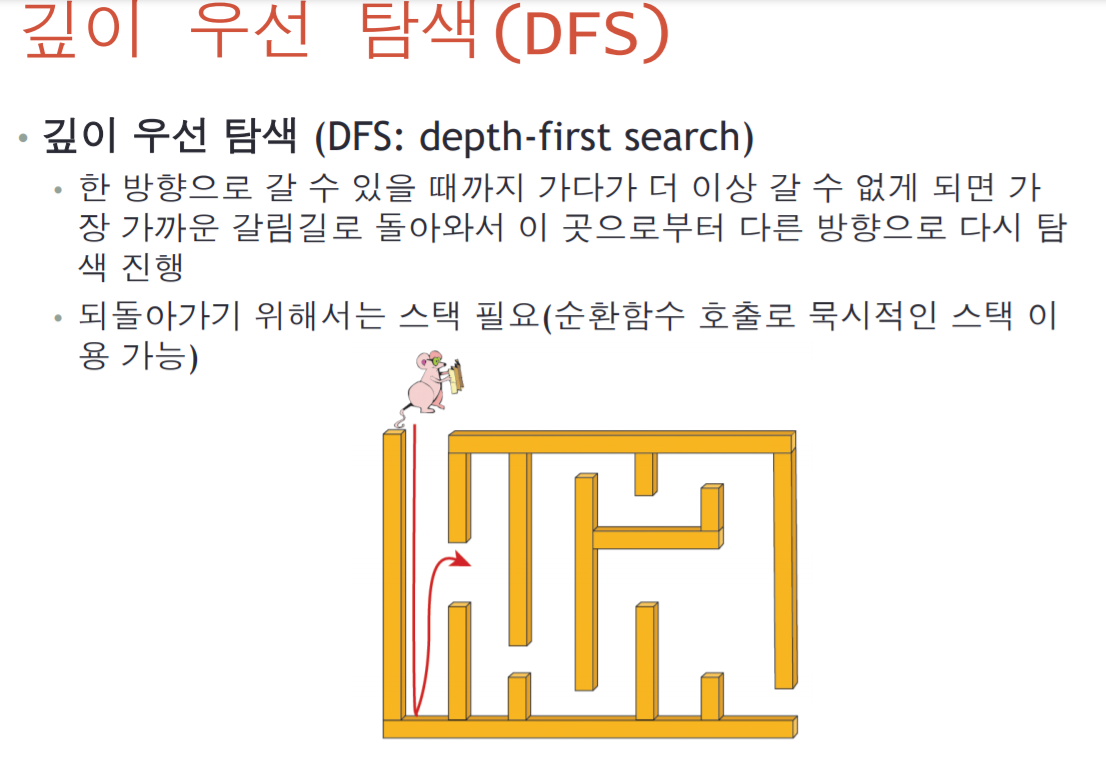
탐색 알고리즘
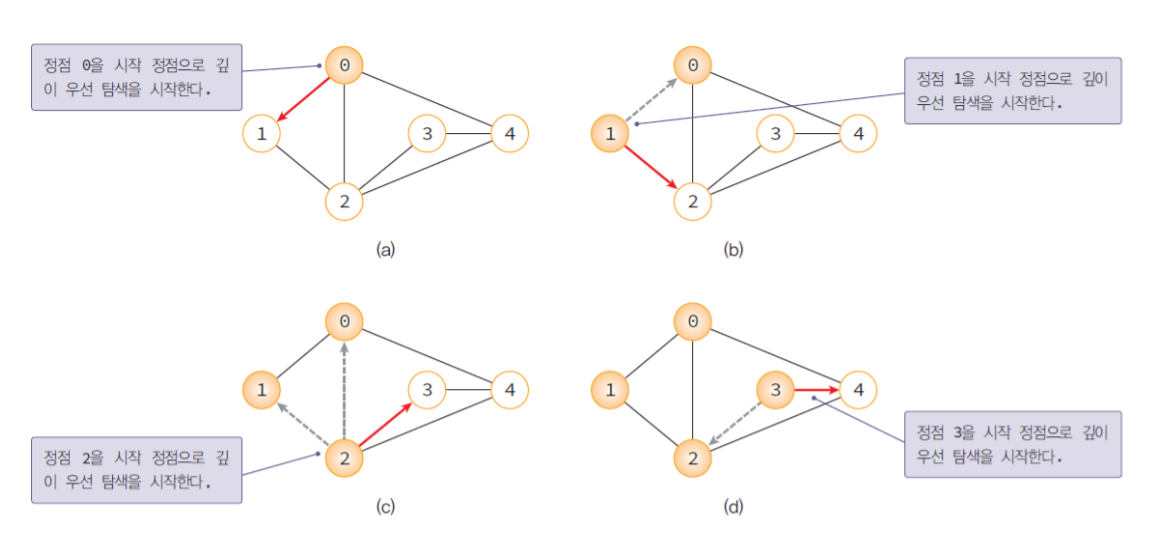
a->b->c->d 순으로 탐색
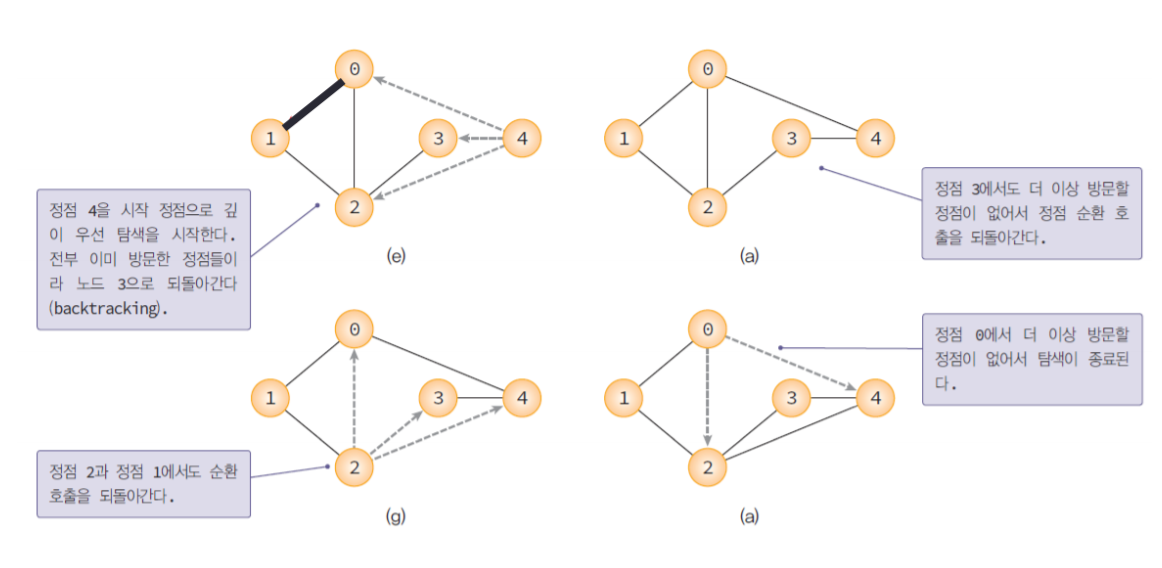
코드:
// 현재 노드 방문
visited[v] = true;
// 방문 노드 출력
console.log(v);
// 인접 노드 탐색
graph[v].forEach(i => {
// 방문하지 않았다면
if (!visited[i]) {
// 재귀 호출
dfs(graph, i, visited);
}
})
}
// 노드 연결 정보
const graph = [
[],
[2, 3, 8],
[1, 7],
[1, 4, 5],
[3, 5],
[3, 4],
[7],
[2, 6, 8],
[1, 7]
];
// 방문 정보
const visited = new Array(graph.length).fill(false);
// 호출
dfs(graph, 1, visited);BFS(깊이 우선 탐색)
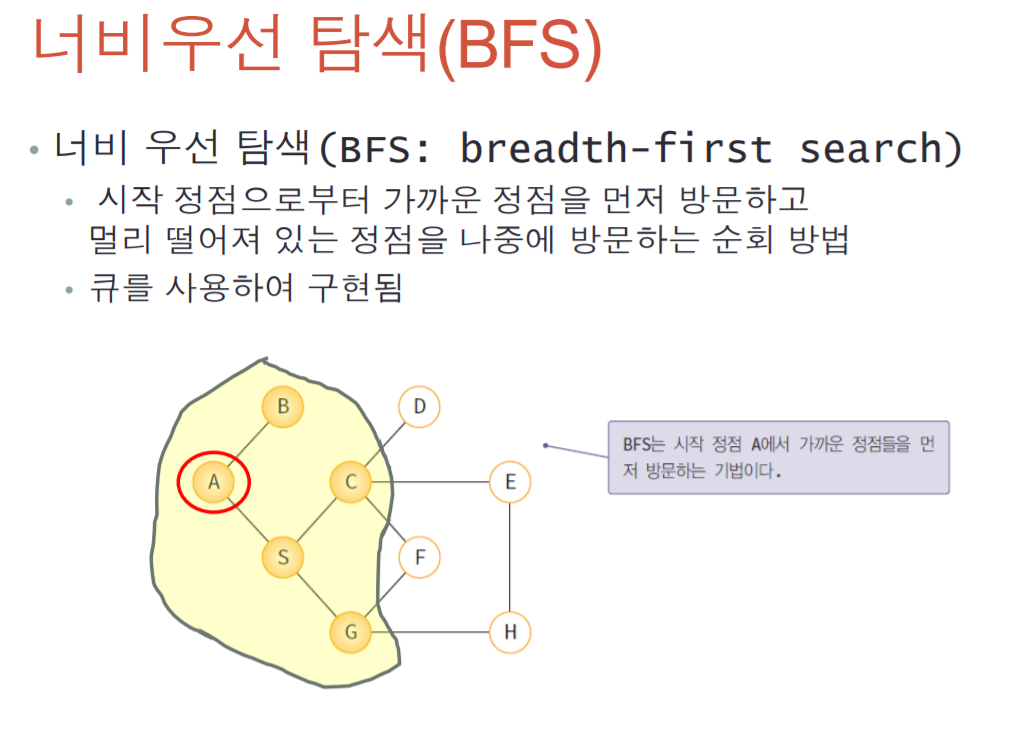
탐색
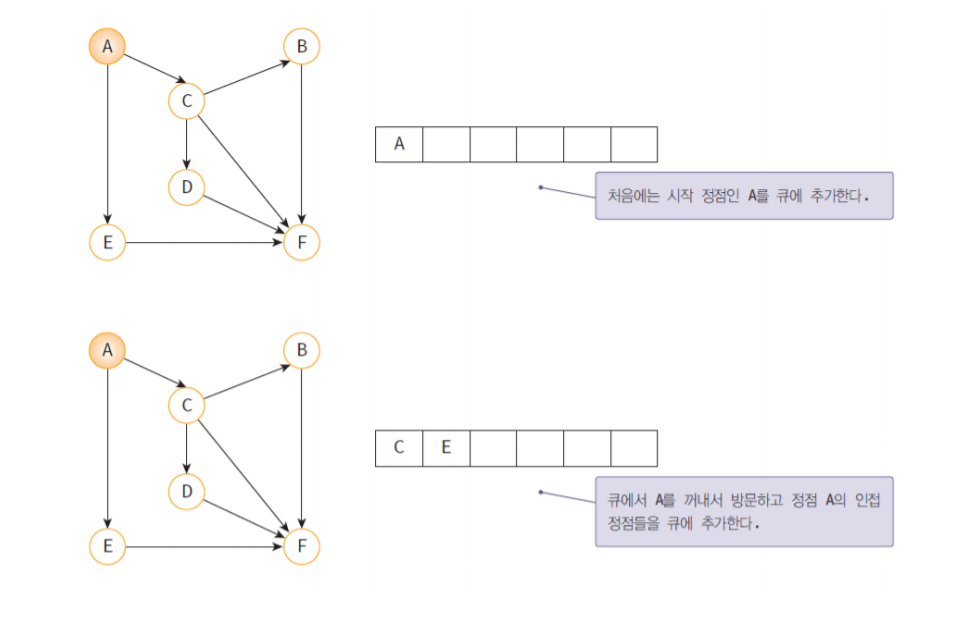
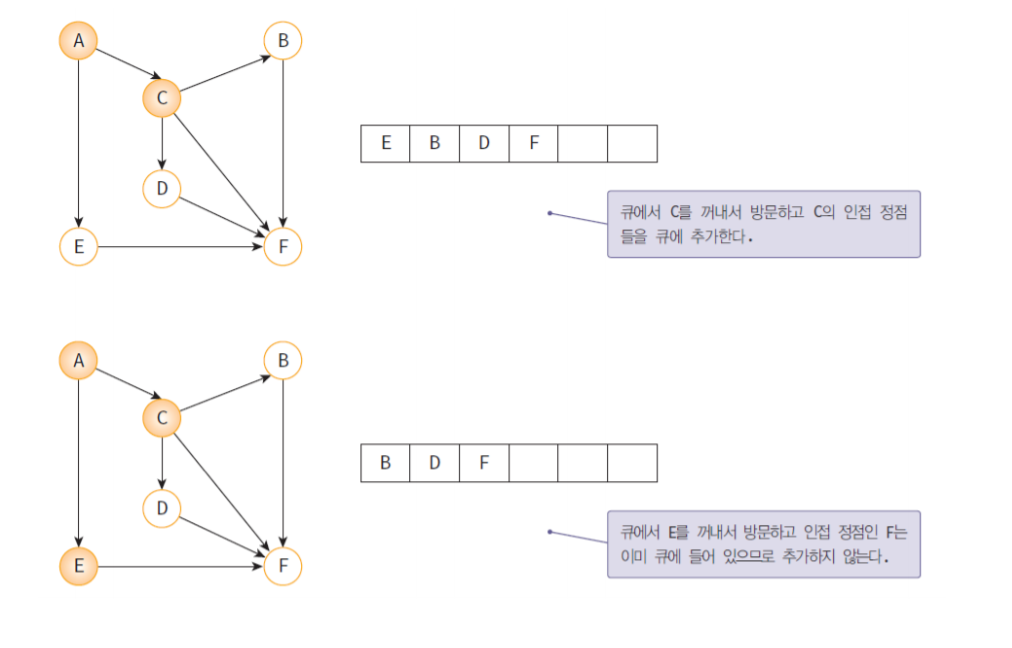
코드
function bfs(graph, v, visited) {
// 큐 구현
const queue = [v];
// 현재 노드 방문
visited[v] = true;
// 큐가 빌 때까지 반복
while (queue.length !== 0) {
// 큐에서 원소 한 개 뽑아옴
const node = queue.shift();
// 방문
console.log(node);
// 원소의 인접 노드 탐색
graph[node].forEach(i => {
// 방문한 적이 없다면
if (!visited[i]) {
// 큐에 추가
queue.push(i);
// 방문 처리
visited[i] = true;
}
})
}
}
// 노드 연결 정보
const graph = [
[],
[2, 3, 8],
[1, 7],
[1, 4, 5],
[3, 5],
[3, 4],
[7],
[2, 6, 8],
[1, 7]
];
// 방문 정보
const visited = new Array(graph.length).fill(false);
// 호출
bfs(graph, 1, visited);프로그래머스 가장 먼 노드 문제풀이:
문제:
n개의 노드가 있는 그래프가 있습니다. 각 노드는 1부터 n까지 번호가 있을때,
1번 노드에서 가장 멀리 떨어진 노드의 갯수를 구하려고 한다.
가장 멀리 떨어진 노드란 최단경로로 이동했을 때 간선의 개수가 가장 많은 노드다.
노드의 개수 n, 간선에 대한 정보가 담긴 2차원 배열 vertex가 매개변수로 주어질 때,
1번 노드로부터 가장 멀리 떨어진 노드가 몇 개인지를 return 하도록 solution 함수를 작성해라.
풀이:
가장 '먼' 노드의 갯수를 구하는 문제여서, 깊이우선 탐색을 생각 하면, 탐색하는데 큰 조건이 필요치 않아 쉽게 해결 할 수 있을 것이다.
입출력 예
n=6
vertex [[3, 6], [4, 3], [3, 2], [1, 3], [1, 2], [2, 4], [5, 2]]
return값 3
입출력 예 설명
1번 노드에서 가장 멀리 떨어진 노드는 4,5,6번 노드다.
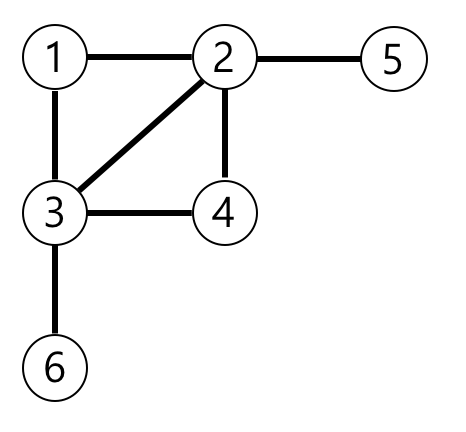
코드:
function solution(n,vertex){
return bfs(1,vertex,n);
}
const bfs=(start,arr,end)=>{
const visited =new Array(end+1).fill(false);
const lenn = new Array(end+1).fill(0);
const queue = [start];
visited[start]=true;
while (queue.length){
const head = queue.shift();//검사 숫자 1이면 1이 있는 요소를 탐색
//console.log('head:',head);
const len = lenn[head]+1;//길이 ex)1,2 2,3면 1->2은 길이가 1,
//1->3는 길이가 2
console.log('lenn:',len);
for (let i of arr){
console.log(i);
if(i[0]===head&& !visited[i[1]]){//검사하려는 숫자가 앞쪽에 있다면
//console.log(i[1]);
queue.push(i[1]);//뒷 숫자를 푸시
visited[i[1]] =true;//방문한 노드 기록
//console.log(visited[i[1]]);
lenn[i[1]]=len;//방문한 노드의 길이 1 추가
//console.log(lenn[i[1]]);
}
else if(i[1]===head && !visited[i[0]]){
queue.push(i[0]);
//console.log([i[1]]);
visited[i[0]]=true;
//console.log(visited[i[1]]);
lenn[i[0]]=len;
//console.log(lenn[i[0]]);
}
//console.log('큐:',queue);
}
}
//console.log(lenn);
const max=Math.max.apply(null,lenn);
//console.log(max);
return lenn.filter((i=> i === max)).length;
}
n=6;
vertex=[[3, 6], [4, 3], [3, 2], [1, 3], [1, 2], [2, 4], [5, 2]]
console.log(solution(n,vertex));느낀점
dfs,bfs를 학업기간에도 배우며 힘들었던 기억이 있어 두려움이 있었으나 훌륭한 강의력에 곧바로 이해 할 수 있었다. 코드를 하면서 아쉬운 것은
shift()함수를 쓰지 않는 것이 좋다고 하여 queue를 직접 구현해서 써야 겠다고 끝나고 나서 알았다. 다시한번 queue를 구현해서 짜봐야겠다..
언제...?
